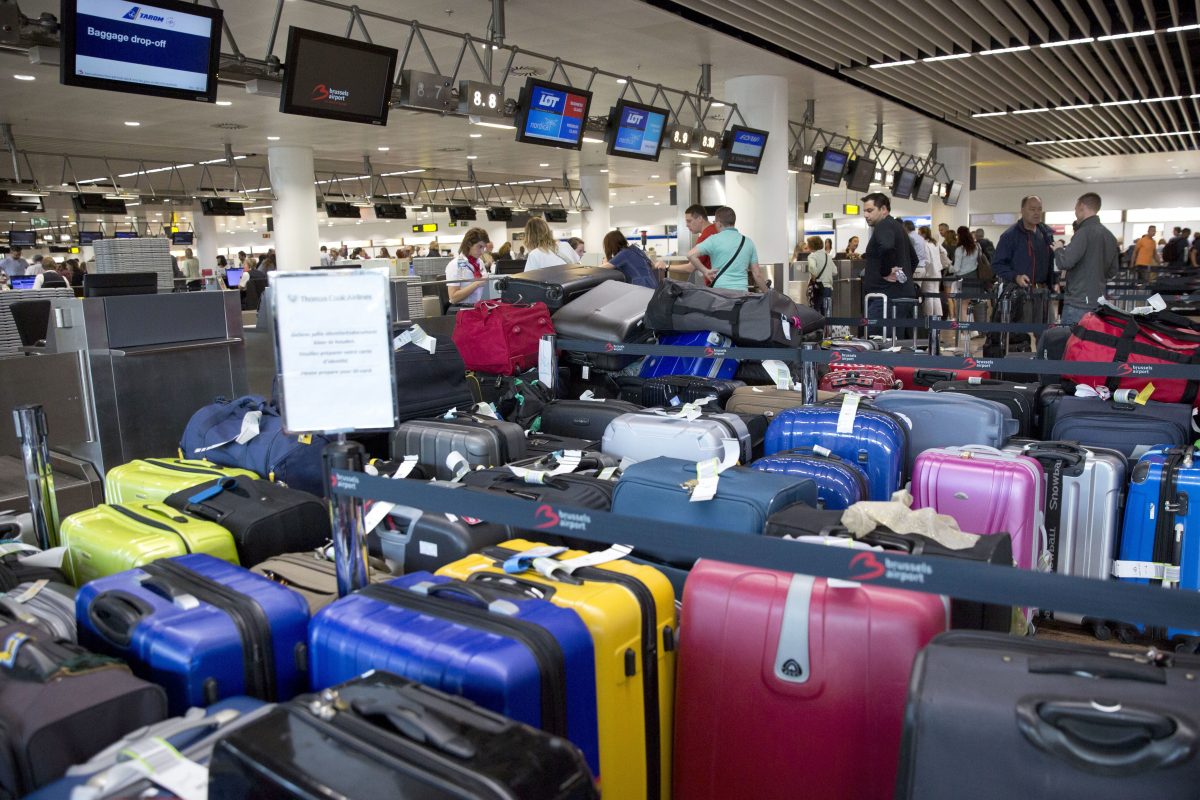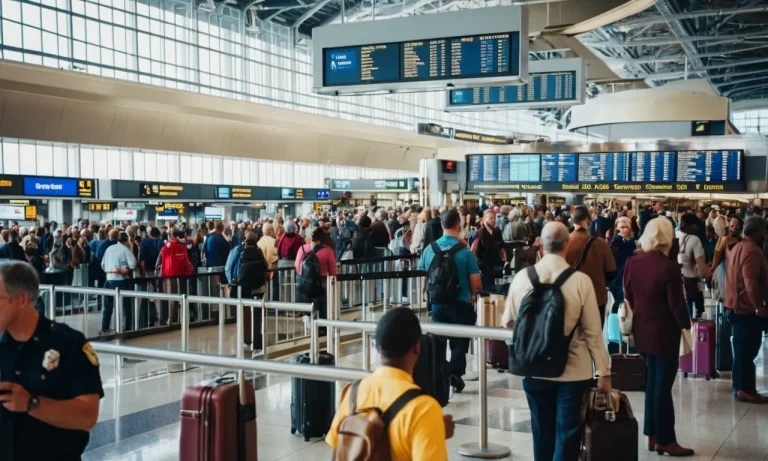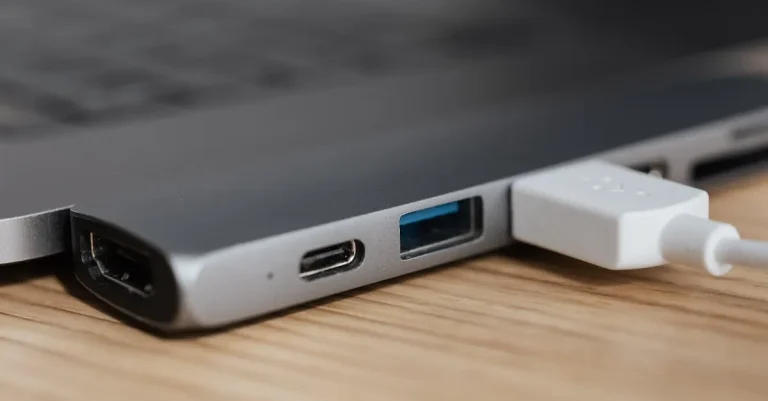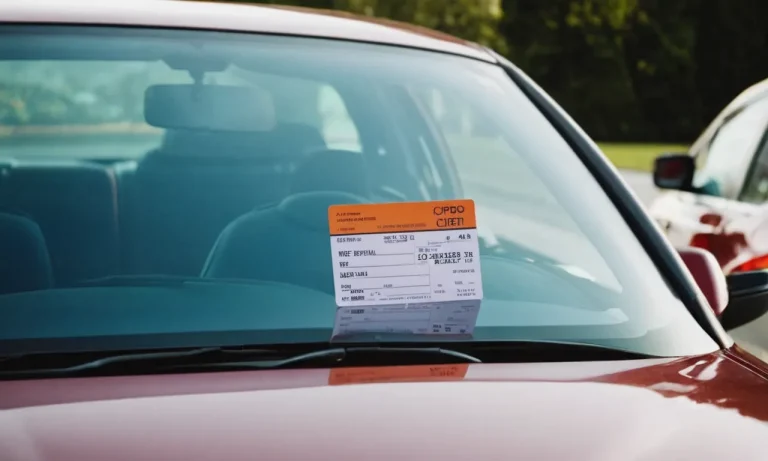Traveling can be stressful enough without having to worry about your bags making it to your final destination.
If you have a connecting flight on American Airlines, you may be wondering what happens to your checked bags during your layover.
The good news is that American Airlines will automatically transfer your luggage to your connecting flight as long as you booked both legs of your trip on the same itinerary.
If you’re short on time, here’s a quick answer to your question: As long as your connecting flight is booked on the same itinerary, American Airlines will automatically transfer your checked bags to your next flight at no additional cost to you.
In this comprehensive guide, we’ll cover everything you need to know about connecting flight baggage policies on American Airlines, including how to check your bags for a connection, fees, airport transfer details, luggage allowances, and what to do if your bags are delayed or lost.
Booking Connecting Flights on the Same Itinerary
When it comes to booking connecting flights on American Airlines, it is important to understand what a single itinerary is.
A single itinerary refers to booking multiple flights under one reservation. This means that all the flights, including the connecting flights, are linked together and treated as one trip.
What is a Single Itinerary?
A single itinerary allows passengers to have a seamless travel experience. Instead of booking each flight separately, passengers can book all their flights at once, making it easier to manage their travel plans.
With a single itinerary, passengers only need to check in once, and their baggage can be checked through to their final destination.
For example, if you are flying from New York to Los Angeles with a connecting flight in Dallas, booking a single itinerary ensures that your baggage will be automatically transferred from your initial flight to your final destination without the need for you to collect and recheck it in Dallas.
Why You Should Book Connecting Flights Together
Booking connecting flights together on the same itinerary offers several benefits. First, it provides peace of mind knowing that your flights are all connected and coordinated.
American Airlines will take responsibility for ensuring that you make your connecting flights on time, and in case of any delays or cancellations, they will rebook you on the next available flight.
Additionally, booking connecting flights together allows for a smoother travel experience. Instead of worrying about collecting and rechecking your baggage, it will be automatically transferred to your final destination.
This saves you time and eliminates the hassle of navigating busy airports with heavy luggage.
Tips for Booking
When booking connecting flights on American Airlines, here are a few tips to consider:
- Check the layover time: Make sure you have enough time between connecting flights to comfortably make the transfer. American Airlines typically recommends a minimum layover time of 45 minutes for domestic flights and 60 minutes for international flights.
- Consider flight schedules: Choose connecting flights with reasonable departure and arrival times to minimize the risk of delays or missed connections.
- Book with a reputable travel agent or directly through the American Airlines website: This ensures that all your flights are properly connected and any issues can be easily resolved.
- Be aware of baggage restrictions: Familiarize yourself with American Airlines’ baggage policy to avoid any surprises or additional fees.
By following these tips, you can ensure a smooth and hassle-free experience when booking connecting flights on American Airlines.
Checking Bags on a Connecting Flight
When traveling on a connecting flight with American Airlines, it is important to understand the process of checking your luggage.
This comprehensive guide will walk you through the steps involved in checking bags on a connecting flight.
Checking Bags at Your Origin Airport
When you arrive at your origin airport, proceed to the check-in counter for American Airlines. Here, you will be able to check your bags and receive your boarding passes for both flights.
Make sure to inform the airline staff that you have a connecting flight, so they can properly tag your luggage and ensure it reaches your final destination.
It is also important to adhere to the baggage weight and size restrictions specified by American Airlines to avoid any additional fees or complications.
Retrieving Bags at Your Final Destination
Upon arrival at your final destination, head to the baggage claim area.
American Airlines typically transfers your checked bags automatically to your final flight, so you won’t need to collect your luggage during the layover.
However, it is always a good idea to double-check with the airline staff or consult the flight attendants during your journey to ensure a smooth transfer of your bags.
If you have any concerns or questions, don’t hesitate to ask for assistance.
Short Layovers and Tight Connections
If you have a tight connection or a short layover between flights, it is crucial to plan accordingly.
American Airlines recommends allowing at least 45 minutes for domestic connections and 60 minutes for international connections.
However, these times can vary depending on the specific airport and circumstances. To ensure a stress-free experience, try to pack light and avoid checking bags whenever possible.
This will save you time and minimize the risk of your luggage not making it to your final destination on time.
Remember, it is always recommended to check the American Airlines website or contact their customer service for the most up-to-date information regarding baggage policies and procedures for connecting flights. Safe travels!
Baggage Fees for Connecting Flights
When it comes to traveling with American Airlines on connecting flights, it’s important to be aware of the baggage fees that may apply. Understanding these fees can help you plan and budget for your trip more effectively.
Here is a comprehensive guide to the baggage fees for connecting flights with American Airlines.
First and Second Checked Bag Fees
For domestic flights within the United States, American Airlines typically charges a fee for both the first and second checked bags. The exact fee may vary depending on factors such as your destination, fare class, and frequent flyer status.
It’s important to note that these fees are usually per flight segment, so if you have multiple connecting flights, you may need to pay the fee for each segment.
For international flights, American Airlines typically allows one or two checked bags free of charge, depending on your destination and fare class.
However, additional bags or overweight/oversized bags may incur extra fees. Make sure to check the specific baggage allowance and fees for your destination before your trip.
Overweight/Oversized Baggage Fees
If your checked baggage exceeds the weight or size limits set by American Airlines, you may have to pay additional fees.
The weight limit for checked bags is usually 50 pounds (23 kilograms) for domestic flights and 70 pounds (32 kilograms) for international flights.
Any bags weighing more than this may be subject to overweight baggage fees.
Similarly, if your checked bag exceeds the size limit of 62 linear inches (158 centimeters), you may have to pay oversized baggage fees.
It’s important to note that these fees can be quite steep, so it’s advisable to pack efficiently and within the airline’s guidelines to avoid any extra charges.
Carry-On Baggage Policies and Fees
American Airlines allows passengers to bring one carry-on bag and one personal item onboard free of charge.
The carry-on bag must fit in the overhead bin and the personal item should fit under the seat in front of you.
These items should comply with the airline’s size and weight restrictions, which are typically 22 x 14 x 9 inches (56 x 36 x 23 centimeters) and 18 x 14 x 8 inches (45 x 35 x 20 centimeters) respectively.
While there is no fee for standard carry-on baggage, American Airlines may charge for additional or oversized carry-on items that do not fit within the specified limits.
It’s important to note that these fees can vary, so it’s best to check the airline’s website or contact their customer service for the most up-to-date information.
Remember, understanding the baggage fees for connecting flights with American Airlines can help you plan and budget for your trip more effectively.
Make sure to check the specific fees and policies for your destination and fare class to avoid any surprises at the airport. Safe travels!

Luggage Allowances for Connecting Itineraries
When it comes to connecting flights, it’s essential to know the baggage allowances set by American Airlines.
This comprehensive guide will provide you with all the information you need to ensure a smooth and hassle-free journey.
Weight Limits for Checked Bags
American Airlines has specific weight limits for checked bags on connecting flights. The standard weight limit for checked luggage is 50 pounds (23 kilograms) for Economy Class passengers.
However, if you are traveling in Business or First Class, you may be entitled to a higher weight limit.
It’s important to check the airline’s official website for the most up-to-date information on weight restrictions.
Size Restrictions for Checked and Carry-On Bags
In addition to weight limits, American Airlines also enforces size restrictions for both checked and carry-on bags.
For checked bags, the maximum dimensions allowed are 62 linear inches (length + width + height). For carry-on bags, the dimensions should not exceed 22 x 14 x 9 inches.
It’s crucial to adhere to these size limits to avoid any issues or extra fees at the airport.
International Flight Restrictions
When traveling on international connecting flights, it’s important to be aware of any additional restrictions that may apply. Each country has its own regulations regarding luggage allowances and prohibited items.
American Airlines provides a comprehensive list of restricted items on their official website, which is worth checking before your trip.
Additionally, some countries may have stricter rules on baggage allowances, so it’s always wise to inquire about these specifics when booking your flight.
Connecting Flight Baggage Transfer Process
How Bags Are Transferred Between Flights
When you have a connecting flight with American Airlines, your checked baggage will typically be transferred automatically from one flight to another.
This means that you don’t have to worry about picking up your bags and rechecking them in during your layover.
American Airlines has a sophisticated baggage handling system that ensures your bags are efficiently transferred between flights.
The airline uses a combination of manual labor and automated systems to transfer bags.
Baggage handlers carefully unload the bags from the incoming flight and place them on conveyor belts or carts.
These bags are then sorted based on their destination and loaded onto the appropriate connecting flights.
American Airlines uses advanced tracking technology to monitor the location of each bag throughout the transfer process, minimizing the risk of lost or misplaced luggage.
Ensuring Your Bags Make It Onto Your Next Flight
While American Airlines takes every possible measure to ensure that your bags make it onto your next flight, it’s always a good idea to take some precautions to further minimize the chances of any issues.
One of the most important things you can do is to make sure that your bags are properly tagged with your contact information.
This will help the airline locate and return your bags to you in the event that they are accidentally misplaced.
Additionally, it’s a good practice to pack any essential items or valuables in your carry-on luggage.
This way, even if your checked bags are delayed or misplaced, you’ll still have the necessary items with you during your journey.
It’s also a good idea to keep an inventory of the items in your checked bags, including photographs and receipts for valuable items, to help facilitate the claims process in case of loss or damage.
Connecting Between Terminals at Hub Airports
If you have a connecting flight at one of American Airlines’ hub airports, such as Dallas/Fort Worth International Airport or Charlotte Douglas International Airport, you may need to transfer between terminals.
American Airlines provides clear signage and directions to help passengers navigate these airports efficiently.
In some cases, shuttle buses or trams may be available to transport passengers between terminals.
It’s important to note that when transferring between terminals, you may need to go through a security screening again. Be sure to allow enough time for this process, especially if you have a tight connection.
American Airlines recommends a minimum connection time of 45 minutes for domestic flights and 60 minutes for international flights.
Short Connection Times and Luggage Transfers
When booking your flights, it’s important to consider the connection time between your flights.
American Airlines has guidelines regarding minimum connection times, but it’s always a good idea to allow for some buffer time, especially if you have checked baggage.
In some cases, if you have a very short connection time, it may not be possible for the airline to transfer your bags onto your next flight.
If you find yourself in a situation where you have a short connection time and are concerned about your baggage making it onto your next flight, you can always speak to a customer service representative at the airport.
They may be able to provide you with alternative options or assist you in retrieving your bags and rechecking them in.
What to Do if Your Bags Are Lost or Delayed
It can be frustrating and stressful to arrive at your destination only to find out that your bags are lost or delayed.
However, there are steps you can take to increase the chances of recovering your luggage and minimize the inconvenience.
Here are some important things to do if you find yourself in this situation:
Reporting Missing or Delayed Luggage
If you discover that your bags are missing or delayed, the first step is to report the issue to the airline as soon as possible. Most airlines have a dedicated baggage services desk where you can file a report.
Provide them with a detailed description of your bag and the contents, including any unique identifiers such as stickers or ribbons. It’s also a good idea to keep a copy of the report for your records.
Reuniting with Your Bag
Once you’ve reported the missing or delayed luggage, the airline will begin the process of locating and delivering your bag to you.
It’s important to stay in contact with the airline and provide any additional information they may request.
In some cases, the airline may be able to track your bag using a tracking number or GPS technology. If your bag is found, they will arrange for it to be delivered to your location.
Compensation and Liability
If your bag is lost or permanently damaged, you may be entitled to compensation from the airline.
Each airline has its own policies and limits for compensation, so it’s important to familiarize yourself with the specific terms and conditions.
In most cases, airlines will reimburse you for the value of your lost items up to a certain amount. Keep in mind that some items, such as valuable jewelry or electronics, may have limited coverage.
Tips to Minimize Issues
While it’s impossible to completely eliminate the risk of lost or delayed luggage, there are some steps you can take to minimize the chances of experiencing these issues:
- Label your bags: Make sure to include your contact information on both the inside and outside of your bags. This will help the airline locate you if your bag gets misplaced.
- Use a distinctive bag: Choosing a unique or easily recognizable bag can make it easier for airline staff to identify and locate your luggage.
- Arrive early: Giving yourself plenty of time before your flight increases the likelihood that your bags will be properly processed and loaded onto the plane.
- Pack essentials in your carry-on: In case your checked bag is lost or delayed, it’s a good idea to pack essential items such as medication, toiletries, and a change of clothes in your carry-on bag.
By following these tips and knowing what steps to take if your bags are lost or delayed, you can help make your travel experience a little smoother.
Remember to stay calm and patient, as the airline staff will do their best to assist you in recovering your luggage.
Conclusion
We hope this guide has helped answer all your questions about checked baggage when connecting on American Airlines flights.
The key things to remember are: book your itinerary with connecting flights on a single reservation, check your bags to your final destination, build in enough connection time, and know what to do in the rare event your luggage is delayed.
Safe travels! With the proper preparation, you can sit back, relax, and not have to worry about your bags during American Airlines layovers.






